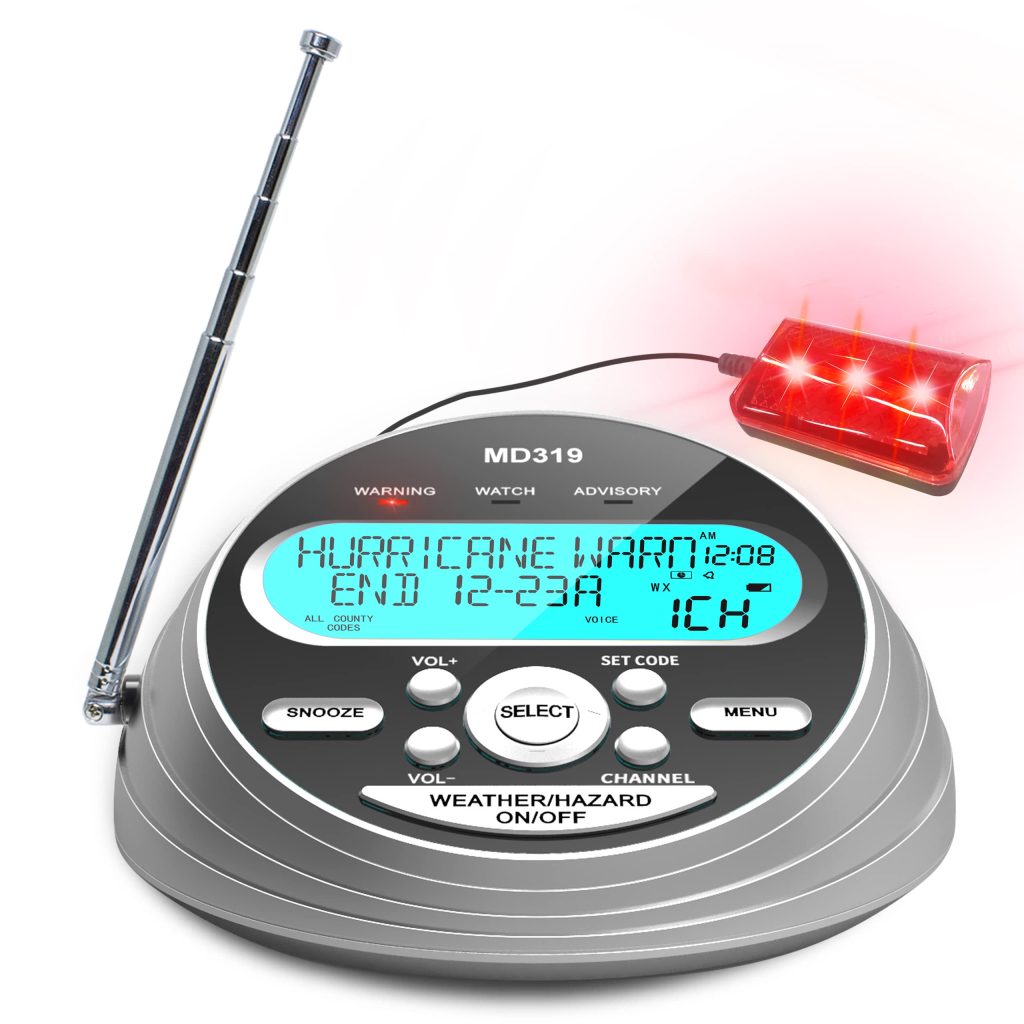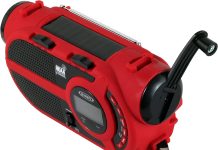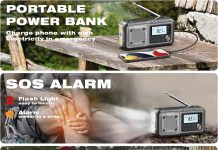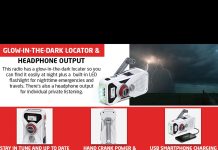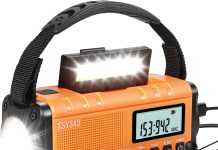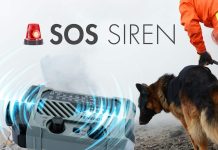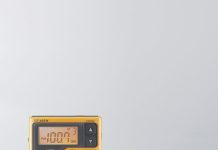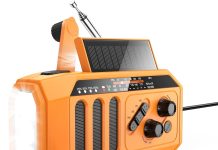We have all heard the familiar sound of a NOAA weather radio alerting us to incoming storms or hazardous conditions.
But have you ever wondered about the technology behind these life-saving devices? In this article, we will explore the fascinating world of NOAA weather radios and uncover the same technology that powers these essential devices.
So please sit back, relax, and prepare to uncover the secrets behind the steady voice that keeps us safe in uncertain weather situations.
This image is the property of upload.wikimedia.org.
Review contents
Introduction
Welcome to our comprehensive guide on NOAA Weather Radio! This article will walk you through everything you need about this essential tool for staying informed and safe during all weather conditions. From the basics of NOAA Weather Radio to the features and programming options available, we’ve got you covered. So, let’s dive in and discover the world of NOAA Weather Radio together!
1. NOAA Weather Radio
Overview and Purpose
NOAA Weather Radio is a nationwide network of radio stations that broadcasts continuous weather information directly from the National Oceanic and Atmospheric Administration (NOAA). The primary purpose of these stations is to provide timely and accurate weather forecasts, warnings, and other critical information to the public.
NOAA Weather Radio is a trusted source of weather updates, ensuring people have the knowledge to make informed decisions and take appropriate action when severe weather strikes.
Broadcast Frequencies
NOAA Weather Radio stations transmit their signals on seven different frequencies, ranging from 162.400 MHz to 162.550 MHz. Each frequency is assigned to a specific area or county, ensuring listeners receive localized weather information. People can access the most up-to-date weather updates for their specific location by tuning their radios to the relevant frequency.
Coverage Area
The coverage area of NOAA Weather Radio stations varies depending on the location and strength of the transmitters. In general, these stations have a range of approximately 40 miles from the transmitter site. However, this range can extend much farther under certain conditions, such as favorable terrain or powerful transmitters. NOAA Weather Radio aims to provide comprehensive coverage, reaching as many people as possible with critical weather information.
2. Radio Reception
Transmitters and Receivers
To receive NOAA Weather Radio signals, you need a compatible receiver. These receivers are designed to tune in to the frequency range NOAA Weather Radio stations use. Furthermore, NOAA Weather Radio transmitters are strategically located nationwide to ensure widespread coverage. This network of transmitters works together to transmit weather information to receivers in various locations, enabling people to receive accurate and timely updates about the weather conditions in their area.
Antennas
To enhance radio reception and maximize the quality of NOAA Weather Radio broadcasts, using an external antenna with your receiver is recommended. An external antenna can help overcome obstacles and interference impacting signal strength. Depending on the location and conditions, using an outdoor or indoor antenna can significantly improve the clarity and reliability of the received weather information.
Signal Strength
The strength of NOAA Weather Radio signals can vary depending on multiple factors, such as distance from the transmitter, obstruction from buildings or terrain, and interference from other electronic devices. Positioning your receiver and antenna correctly ensures the best possible signal reception. Additionally, choosing a receiver with adjustable signal strength capabilities can help fine-tune and optimize the reception for your specific circumstances.
3. Weather Alerting System
SAME Technology
The Specific Area Message Encoding (SAME) technology is a crucial feature of NOAA Weather Radio that allows users to receive alerts and warnings specific to their location. SAME technology uses special codes to target messages to specific areas or counties, ensuring that individuals receive only relevant information. With SAME technology, users can program their receivers to activate and sound an alert whenever severe weather warnings are issued for their designated area, providing a crucial early warning system.
Alert Tones
NOAA Weather Radio uses distinct alert tones to convey different weather warnings. These alert tones serve as auditory signals to attract attention and prompt immediate action. For example, a tone with a high-pitch sound indicates a tornado warning, while a lower-pitch sound signifies a severe thunderstorm warning. These alert tones are designed to cut through ambient noise and effectively notify listeners about impending severe weather conditions.
Types of Alerts
NOAA Weather Radio broadcasts various alerts to inform the public about potential weather hazards. These alerts include severe weather warnings, watches, advisories, and unique weather statements. Severe weather warnings are issued when hazardous conditions are imminent and require immediate action. Watches indicate that severe weather is possible and that people should be prepared. Advisories and particular weather statements provide additional information and guidance related to weather conditions but may not require immediate action.
This image is the property of midlandusa.com.
4. Emergency Public Information
Emergency Alert System
In addition to providing weather information, NOAA Weather Radio is integrated with the Emergency Alert System (EAS). The EAS is a nationwide network that allows emergency officials to broadcast crucial public safety messages to the public quickly. Using the same frequencies and infrastructure as NOAA Weather Radio, the EAS ensures that critical messages reach a broad audience during emergencies, including non-weather-related events.
Non-weather Emergency Messages
NOAA Weather Radio is essential for receiving non-weather emergency messages issued by federal, state, and local authorities. These messages can include alerts about natural disasters like earthquakes, wildfires, tsunamis, and other emergencies such as chemical spills or terrorist threats. By integrating all these emergency messages into one system, NOAA Weather Radio helps keep the public well-informed and prepared for a wide range of potential hazards.
Civil Emergency Messages
In addition to weather and other non-weather emergencies, NOAA Weather Radio also broadcasts civil emergency messages. These messages provide important information about community events, public safety initiatives, and other non-emergency announcements, helping to foster a sense of community and keep people connected. NOAA Weather Radio truly serves as a lifeline of information, ensuring that communities are well informed and prepared for any situation.
5. Hazards and Safety Information
Severe Weather Warnings
One of the primary functions of NOAA Weather Radio is to provide severe weather warnings. These warnings are issued whenever severe weather conditions are imminent. Whether it’s a thunderstorm, blizzard, hurricane, or other severe weather event, NOAA Weather Radio ensures that people receive timely and accurate information. These warnings enable individuals to act appropriately to protect themselves and their property.
Tornado Warnings
Tornado warnings are perhaps the most critical alerts provided by NOAA Weather Radio. When meteorologists detect or observe a tornado, a warning is issued for the affected area.
These warnings are designed to prompt individuals to seek immediate shelter and take necessary precautions to ensure their safety. By relying on NOAA Weather Radio for tornado warnings, communities can be prepared and respond effectively to this highly destructive and dangerous weather phenomenon.
Flood Warnings
Flood warnings are another vital part of NOAA Weather Radio’s repertoire. These warnings are issued when heavy rainfall or other factors likely cause significant flooding in a particular area. Floods can be devastating, causing damage to property and posing severe risks to human safety. NOAA Weather Radio ensures that people receive early warnings about potential flooding, allowing them to take appropriate measures to protect themselves and their belongings.
This image is the property of midlandusa.com.
6. Marine and Coastal Weather
Coastal Hazards
NOAA Weather Radio extends its services beyond land-based weather conditions and provides valuable information for marine and coastal areas. Coastal hazards such as rip currents, high surf, and tropical storms can pose significant risks to boaters, beachgoers, and coastal communities.
By tuning in to NOAA Weather Radio, individuals can access marine and coastal weather forecasts, ensuring they are well-equipped with the information they need to make informed decisions and stay safe in these environments.
Marine Forecasts
Marine forecasts are an essential component of NOAA Weather Radio’s capabilities. These forecasts provide information about weather conditions, wave heights, wind speeds, and other factors specific to the marine environment.
By keeping boaters, fishermen, and other maritime enthusiasts informed, NOAA Weather Radio is vital in promoting safe practices and reducing the risks associated with rough seas or approaching storms. Whether setting sail or planning a day at the beach, tuning in to NOAA Weather Radio ensures you have the latest marine weather information.
7. Climate and Forecasts
Climate Data
NOAA Weather Radio provides immediate weather updates and warnings and offers valuable climate data. This data includes historical weather patterns, temperature trends, and long-term climate forecasts.
By accessing this information, individuals can gain insights into seasonal climate patterns and better understand how weather conditions may impact their day-to-day lives. NOAA Weather Radio empowers people to plan, whether it’s for outdoor activities, agriculture, or other weather-dependent endeavors.
Local Forecasts
In addition to national and regional forecasts, NOAA Weather Radio provides localized forecasts for specific areas. These forecasts consider localized weather factors, such as topography, microclimates, and urban heat islands.
By relying on NOAA Weather Radio for local forecasts, individuals can access accurate and detailed weather information tailored to their specific location, ensuring they are well-prepared for the conditions they will encounter.
Special Weather Reports
NOAA Weather Radio also disseminates special weather reports when necessary. These reports are reserved for weather events that require immediate attention or present significant risks to the public.
Examples of special weather reports may include extreme heat advisories, air quality warnings, or updates on ongoing weather phenomena like hurricanes or wildfires. By providing these reports, NOAA Weather Radio ensures people have the most up-to-date information to make informed decisions and take appropriate precautions.
This image is the property of Amazon.com.
8. Programming and Features
Portable Radios
NOAA Weather Radio receivers come in various forms, including portable options for on-the-go use. These portable radios are compact and lightweight, allowing you to carry them anywhere, whether hiking, camping, or traveling. Having a portable NOAA Weather Radio ensures that you stay connected to critical weather updates, enabling you to prioritize safety and stay ahead of changing weather conditions no matter where you are.
Same Weather Radios
A specialized type of NOAA Weather Radio receiver is the SAME Weather Radio. These receivers are equipped with the Specific Area Message Encoding (SAME) technology we mentioned earlier. SAME Weather Radios allows users to program their receivers to sound an alert only for specific counties or areas of interest.
This feature is handy for individuals who want to receive weather alerts for specific locations, such as their home or workplace, ensuring they are always in the know about weather conditions that directly impact them.
Alternative Methods of Receiving Weather Information
While NOAA Weather Radio is an invaluable resource for weather updates, alternative methods are available for receiving weather information. These include smartphone apps, weather websites, and television or radio broadcasts.
It is worth exploring these other options and considering how they complement or supplement your use of NOAA Weather Radio. Ultimately, the more sources you have for weather information, the better prepared you will be to stay safe and make informed decisions during severe weather events.
10. Conclusion
We hope this comprehensive guide has taught you about NOAA Weather Radio’s many features. From its nationwide coverage and specialized alerts to its integration with emergency messaging systems and marine and climate information provision, NOAA Weather Radio is an indispensable tool for keeping the public informed and safe.
Whether you rely on a portable radio, a SAME Weather Radio, or explore alternative methods of receiving weather updates, staying connected to NOAA Weather Radio ensures that you are prepared and ready to face whatever Mother Nature may bring your way.
Stay safe, stay informed, and enjoy the peace of mind of having NOAA Weather Radio by your side!
This image is the property of www.centralillinoisproud.com.





